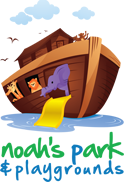Playground Safety During the Yearly Seasons: Winter
Posted by Cristen on 16th Jan 2017
 Brrrr! It's cold up north, but the children are all excited to go
outside. They love the fantasy look of playground equipment blanketed with snow
and ice. No matter how pretty that winter wonderland play structure looks, it
is fraught with hazards that can cause injury. Playground safety during the yearly seasons is
always a priority, but in the winter months, everyone must be extra vigilant so
that children remain unharmed on and around the equipment.
Brrrr! It's cold up north, but the children are all excited to go
outside. They love the fantasy look of playground equipment blanketed with snow
and ice. No matter how pretty that winter wonderland play structure looks, it
is fraught with hazards that can cause injury. Playground safety during the yearly seasons is
always a priority, but in the winter months, everyone must be extra vigilant so
that children remain unharmed on and around the equipment.
Check it out!
Even areas with record-breaking snowfalls enjoy sunny winter days that beckon children outside. Check the weather reports daily and if sunshine is in the forecast, check out the playground and equipment before the fun begins.
If there are trees on the playground, take a walk around and survey the area for loose or broken tree branches. If they cannot be removed, keep that section of the playground off-limits.
Inspect the safety surface around playground structures for frozen spots. Not all surfaces are resilient in very cold weather and lose their ability to protect falling children from injuries. If the ground cover is frozen, the equipment is not safe to use.
Snow can conceal dangerous objects such as broken or damaged equipment. Remove all snow from around the play structures. Clean the snow off stairways, slides, ramps, hand grips, and from the entryways of tunnels. Dry off as many surfaces as possible. If freezing rain and freezing temperatures have previously occurred and there is ice coating the structure, it is not safe to use. Wooden playground equipment has a higher risk of winter damage than plastic equipment and accidents can occur. These structures should be avoided during the winter.
If the play structure is not safe to use, check for safe footing in other areas of the playground that are good for snowball target practice and building snow people. Keep the play structure off-limits.
Bundle up!
Children should dress appropriately for winter, with as little skin exposure as possible. Hypothermia is a danger in low temperatures, so outdoor playtime should be shortened. Know the signs of the onset of early hypothermia:
- Shivering
- Loss of coordination
- Confusion
Should a child show any of these symptoms it is time to go inside and warm up. Later stages of hypothermia, such as dilated pupils and slowed breathing require immediate medical attention.
Tuck it in!
Winter clothing has some hazards of its own. When using playground equipment, scarves, buckles, drawstrings, boot laces, zipper pulls, and ties on jackets can become entangled or caught in small places resulting in choking and other casualties. To avoid mishaps, tuck in all loose and dangling pieces and leave the scarf inside. Neck warmers are a great alternative to scarves and are much safer on the playground.
Ski and snow pants are usually made of nylon. A child wearing nylon will experience an increase in speed on a slide, even slides with plastic beds, which results in injury. One solution is to assign a spotter at the end of the slide to catch the children. The other solution is to call all slides off-limits.
Be Mindful!
The added danger of slippery ice and snow on the playground requires adults to be mindful of their charges. Keep children away from unsafe play structures and areas. Be alert and ready to react if needed.
Enjoying outdoor play in the wintertime is as important as any other time of the year. Even fifteen to thirty minutes will help children absorb Vitamin D, get some exercise, decrease the chances of obesity, and build their immune systems. Happy children will return to a warm building when playground winter safety is practiced.
Cover it Up!
Shade structures over playground equipment not only shades the playground equipment for the hot sun during the summer, but it will prevent snow and ice from accumulating onto the playground structure itself. Although we highly recommend "winterizing" your playgrounds shade fabric by taking down the fabric and storing it in a safe place, you can keep the shade fabric up during the winter weather to help with safety if you are in a region of light snow fall.
To learn about safe and fun playground equipment for schools, churches, communities, and more, contact us.


